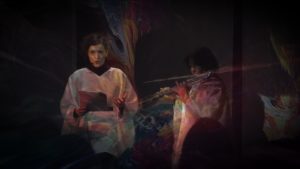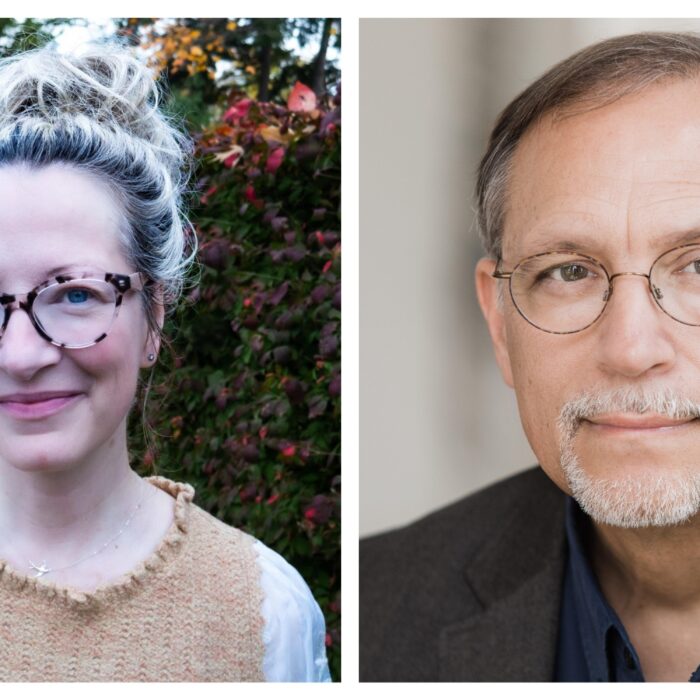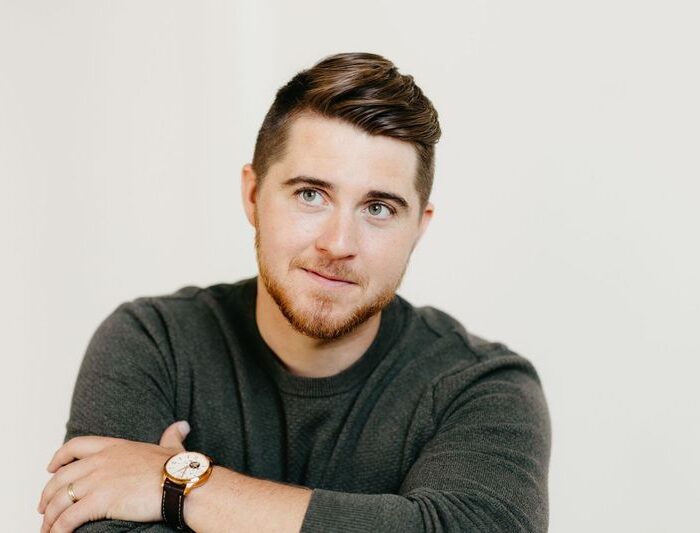
The Art of Change – Composer Jean-Baptiste Barrière on His Path to Opera
By John VandevertWhether one wishes it to be true, contemporary opera and those who create it have an undeniable responsibility to engage with the world and its many polemics and difficulties. Although not a new concept, having been liberated from its purely entertainment existence so many centuries ago, the operatic genre now fully occupies the role of participant and commentator within an ever-changing landscape full of competing views and discourses. The very notion of what opera is has changed dramatically, and it’s rather difficult to ascertain what the “operatic” functionally means. Does an opera still have a set aesthetic design, structure, and form, or has it become a quality that composers can exploit in non-traditional contexts? The questions of “What is opera” and “what does it mean to be an opera” pushed me to find out what it means to do opera in the 21st century now that the form has been freed from content. The supremacy of aesthetic conventions (and even genre) in the compositional process has functionally ended.
The infusion of technology, digitalization, social media, and online content creation has excitingly altered the idea of music composition. Thus, creating an opera has become something without one face but many. In this series, I interview contemporary composers, artists, and creative individuals who use the operatic form as a conduit for their creative expression.
Leading with the inquiry, “What is opera and the quality of ‘operatic’ to you?” in each interview, I examine a project or work through the lens of figuring out just what it means to do opera in the 21st century. No longer bound by antiquarian regulations, artists are now using the “opera” to make a point. I want to figure out what that is.
Jean-Baptiste Barrière
Barrière is a French audio-visual and electronic composer whose relationship with music is colored by his eclectic education in the world of philosophy, mathematical logic, and the history of art itself. Having started in the world of electronic music at 13, he quickly developed his love of the art. After receiving his bachelor’s degree in philosophy, he pursued his doctorate at Sorbonne University, where he realized his interests in post-structural conceptions of musical expression via the convergence of music and science.
Around the late 70s, “America’s Most Wired Composer” Tod Machover personally invited Barrière to the Institute for Research and Coordination Acoustic/Music (IRCAM) in Paris. In 1981, after only a week at IRCAM, he began his 17-year-long career at the Institute, where he worked with composers like American electronic composer Morton Subotnick and conducted research on voice/computer synthesis. In 1998, he left IRCAM and started his career as a freelance composer because of his strong attraction to the growing capabilities of image-sound synthesis. From there, his career skyrocketed. As he explained, his aesthetic interest revolves around creating totalistic experiences, encapsulating music and visuals, and meshing together everything into a homogenized aesthetic universe. Each part plays its role, but never against the fabric of the whole. Using a wide range of forms, from installations to staged works, his “Gesamtkunstwerk” approach toward image-sound synthesis has proven to be a fruitful endeavor and extremely popular the world over.
When asked about his artistic philosophy—the fundamental subtext to his compositional process—Barrière noted that having begun his creative life via his interest in cinema, the synergy of visuals and media was vital.
“What I really wanted to do was ‘cinema’ in the sense of putting together image and sound, which is in a way the most transformative idea of Gesamtkunstwerk. That was my leading creative idea.” A philosophical tinge overlays his image/sound synthesis ideas, which gives his work an ideological framework. As he stated, “I integrated philosophy because I had this idea that I needed to define a background for my practice. I wasn’t satisfied with just doing art and using technology. I wanted to have some distance to think about what I’m doing. In University, there was an opportunity to go towards mathematical logic and have a full education, however stay connected to music.”
At the heart of Barrière’s artistic mission is a desire to merge all his various interests—from linguistics and mathematical logic to music and technology—into a singular expression of self, yet superseding any particular discipline. He noted, “I was really trying to do a synthesis with the aim to bring all my interests one step further on the practical aspect of music.” To Barrière, music is a “spiritual quest,” a way to manifest the unimaginable and give a body to that which can only be second-handedly described. In his words, “Music as a function is to reveal things which cannot be expressed otherwise. It’s not something you can completely, rationally articulate with words.”
This teleological and structural enigmatism enticed Barièrre, then and now. “What’s always fascinated me is the unknown part of music. What we’re trying to reach without knowing how to do it. That’s why technology and science are important. They are trying to apply a structure and reach this unknown domain.”
Route to Opera
Barrière’s inaugural journey as a creative in the operatic art form began in 2006 when they asked to create visuals for a concert production of Finnish composer Kaija Saariaho’s first opera “L’Amour de loin.” (Barrière and Saariaho are spouses.) However, as he would share, his entrance into opera was not intentional.
“It was by accident, actually. They asked me, ‘We’re doing L’Amour de Loin in a concert version. Would you be interested in doing your work for the opera?’ You could hardly say no because I was involved in the steps of making the opera, the premiere, and other productions. I knew it by heart.” Given that was during the early 2000s, Institutional support for audio-visual work was simply unheard of. “I said yes despite the fact that doing this kind of work is not a technical issue but a time one. I mean, two hours with live video and processing, without Institutional help is incredibly difficult. I was really insane to say yes.”
When next asked to work on an opera, the task was much more feasible for one person. “I never imagined going down this direction. But of course, seeing as I love the music of Ravel, I said yes. Coming after ‘L’Amour,’ it was very short and more manageable.”
His participation in opera includes work on Messiaen’s behemoth, borderline surrealistic operatic spectacle “Saint Francis of Assisi.” As Barrière unequivocally stated, “That was the hardest thing I had to do thus far in my career. The opera itself is six hours long, and so it was quite a harrowing feat. Of course, I loved and still love the composer. I was personally involved in the development of the 1998 Salzburg production, which was supposed to be with Messiaen himself, after the opera’s debut in 1984.” Barrière is definitively no stranger to the operatic stage and its many demands.
But his reason for leaving opera as an audio-visual composer was decisive. It echoed his larger interests in exploring the aesthetics of Gesamtkunstwerk and the marriage of art and expression. “That [Messiaen’s opera] was the end of my partnership with working with opera in this condition. This is to say, incredibly tight controls on timing, not much time to rehearse as one, and little ability to see the pieces move together.”
As we spoke, he voiced how unmanageable long operatic productions are to him and how uncontrollable many of the mechanics are when putting together an opera. “Doing a production like “Saint François d’Assise,” an incredibly long production, mind you, is always a runaway train, as there’s no way to go back and do things over quickly. It’s not even possible to play all the visuals at once during rehearsals, so it was just an untenable situation.” Outside of these concerns, however, were the aesthetic ones. Namely, he couldn’t fully realize his desire for audio-visual symbiosis through the pedanticism of opera.
“There was little room to work with interpretation. There is little artistic collaboration between the video and the music, and aesthetically, I couldn’t cope with that. It wasn’t my way to see things. I wanted the image to come from the music.”
In short, he paraphrased his intentions, “Artistically, I want all the things to be congruent,” and he couldn’t do that through the traditional forms of operatic theater. He realized that for him to manifest his true creative mission, he would have to look elsewhere or, as his shift away from IRCAM and “The Art of Change” demonstrated, do it himself. In a strongly assertive but deeply personal inflection, Barièrre noted, “When everything is in partnership with each other, that is what I want with my art. To do that in operatic conditions was impossible. It took me the case of going to the extreme to realize that I didn’t want to do this in even controllable circumstances.” However, he did one more collaboration before leaving the genre altogether for seven years. The opera was Berg’s “Wozzeck” under conductor Esa-Pekka Salonen.
“The Art of Change”
The catalyst for the 2016 project “The Art of Change,” created during his residency at The New School in Manhattan, came from two desires. First was the deepening of his interest in the relationship between the invocation of feeling—the way it’s artistically demonstrated—and how themes are shown. “The idea was born, in one way, from my fascination for the voice as an instrument and a catalyst of emotion and expression. Of course, there’s the question of meaning. It’s unavoidable when you’re questioning why you make music and how you want to do it.”
The second was his desire to more fully integrate his audio/visual work into the fabric of the world and put his music in socially conscious dialogue with larger, more topical themes. “There was a moment when I felt it was necessary to find forms that were more world-centered. I wanted to find a form that allowed me to encompass all the dimensions of which I’m interested, i.e., voice, music, electronics, and political philosophy.”
The “opera” portion of the larger “The Art of Change” project first premiered in January 2020 (four years after the project first began). During the heat of COVID’s first wave, it became evident that we all have a social duty to engage and help change our world. Emphatically, he stated, “We should engage ourselves in world-changing activities, and not simply suffer by what’s coming, reacting without the urge to do anything.”
The story behind the larger project of “The Art of Change” was brought about because of Barrière’s desire to match the project’s form and overall philosophy with that of The New School itself, founded in the early 20th century by European intellectual emigres fleeing World War I, “The school has a very strong political background. The philosophers Theodor Adorno and Max Horkheimer are connected to the school, as well as composers like Hanns Eisler, who taught composition there in the 40s.”
But the more significant commitment of The New School to curricular diversity and social awareness helped form the opera’s more extensive framework. “I was looking at the curriculum and seeing what students were being taught, and I was amazed by its eclecticism. So in this environment, I had to find a special form that could accommodate the history of the university and its commitment towards the ideals of an ‘open university’ which is oriented towards world change in its many forms.” After identifying the project’s focus, he pitched it to the New School administration, and away he went. As he explained, in his mind, the project “The Art of Change” epitomized the central purpose of a modern Institution of higher learning. “Bringing together inside of a stage work something that deals with larger issues of what needs to be changed, which, for me, is at the center of a pedagogical institution. Not just teaching how to make a living but to actively engage in the world and become engaged citizens.”
Thus, “The Art of Change” became a tangible way to encourage the performers and audience members alike to develop a deeper awareness and attention to the many problems of our world and a fortified resolve in critically engaging and developing solutions for long-term progress. Through performance, social, cultural, and global adversity can gain a new dimension. Through art, we can come to understand our world from a new perspective.
The Operatic Form
To Barrière, the operatic form is an open musical structure that can be manipulated and filled in myriad ways. As he explained, “Opera’s a type of form that can accommodate all types of materials and sources. What’s playing the role of structure is the returning of elements, rather than motivic elements, formally speaking.”
Thus, in the “Art of Change,” the diversity of expression and musical effects, and their continuous return, serve as the work’s main pillars, giving continuity to it and allowing narratives and storylines to emerge. Barrière was well aware of the history of opera, as he expressed his desire to both transcend the conventional operatic tradition while at the same time reinventing the classical form. “For a long time, composers in the 20th century were prisoners of the model of the ‘romantic opera.’ They somehow felt they needed to get rid of such conventionalism, explaining why many composers like Boulez didn’t compose operas.”
Although Barrière grew up with such thoughts, it stopped him from facing the issue head-on. “I wanted to find forms that could encompass all the capabilities of the human voice and all elements that can be interpreted as singing.” This dedication towards liberating art from historical convention and critically examining the aesthetic contents of said conventions came through when asked about the role of predictability and form, as it seemed paramount to his compositional work. Speaking about the former, Barrière stated, “If it [the opera] gives nothing new and only stays to the familiar, it’s fairly boring. On the other hand, it can be very important when there is structure and conventionality.”
However, an opera must have time built in for musical and textual ideas to ruminate in the audience. They must have room to build personal connections with the opera content. “An opera must find a way to leave space for people to think about what is presented. You can’t just go through without any breathing room. Pacing is key.” As he noted, in the first versions of “The Art of Change,” there was little room for such breathing. “In the first sketches of the opera, it was much longer and the activity just kept going without pause. I had to remind myself to slow down. It became too much, and I didn’t want to kill the meaning. Finding the right balance was very necessary for me.”
For Barrière, “opera imposes a certain form on the composer, in my thinking. A way of coming into the action and then leaving the action for more action, just the continuous flow of ideas, really.” Thus, balancing the qualities of predictability and spontaneity becomes vital in providing a sense of flow to both the musical and narrative energy. He notes that the design of “The Art of Change,” a mixture of instrumental sight-reading and pre-fabricated singing, was created to help give the performers more control over their instrument. “What I’m calling ‘directionality,’ it’s clear to see that you’re on a path leading somewhere. But something may happen that you’re redirected at a crossroads and you choose to take a different path. I tried to emulate this in “Art of Change.”
“The Art of Change” was Barrier’s attempt to do just that, balance these two oppositional forces. “I was trying to avoid predictability, but not all the time. If it was all the time, you’re surprised all the time and then eventually nothing becomes surprising. You must decide at which moments you will shock and disrupt the audience.”


